Guides
How to Grow Alocasia Calidora: Your Ultimate Guide to Elephant Ear Care
Are you looking for an exotic, lush addition to your indoor garden? Alocasia Calidora, commonly known as the Elephant Ear plant, might just be the perfect choice!
With its large, glossy, heart-shaped leaves and tropical appeal, it’s no wonder that this stunning beauty has become a favorite among indoor gardeners. However, while Alocasia Calidora is a showstopper, it does require specific care to truly thrive. If you’re wondering how to properly care for this magnificent plant, you’ve come to the right place. In this guide, we’ll dive into all the essential tips, from lighting to propagation, to help you grow and maintain a healthy Elephant Ear plant.
What is Alocasia Calidora?
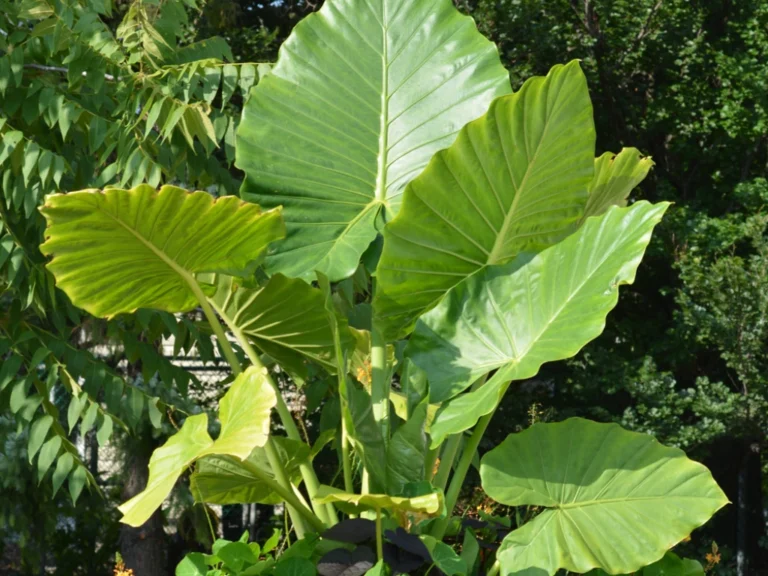
Alocasia Calidora is part of the Alocasia genus, which includes many striking tropical plants known for their large, dramatic leaves. Native to Southeast Asia, the Calidora variety is prized for its elephant-ear-shaped foliage, which can grow up to 2 feet in length in ideal conditions. It is also known for its glossy, dark green leaves with bold veins that make a striking contrast to the surrounding decor.
In its native habitat, Alocasia plants grow under the dense canopy of tropical rainforests, where they benefit from high humidity, filtered sunlight, and rich, well-draining soil. While growing Alocasia Calidora indoors might seem challenging, with the right environment, you can successfully bring the tropics to your home.
Read more: 5 Trending Houseplants for 2025: Must-Have for Every Home
How to Care for Alocasia Calidora (Elephant Ear Plant)
Light Requirements
Alocasia plants, including the Calidora, flourish in bright, indirect light. If you place your Elephant Ear plant near a window with filtered sunlight, it will thrive. Direct sunlight can scorch its large leaves, leaving them brown and crispy. If your space doesn’t get enough natural light, you can supplement with grow lights designed for tropical plants.
Key Tips:
-
Ideal Lighting: Place your Alocasia Calidora near a window that gets bright, indirect light. East-facing windows are often ideal since they provide morning sunlight without the intensity of afternoon rays.
-
Grow Lights: If your home doesn’t get sufficient natural light, especially in winter, consider investing in grow lights. This can help mimic the tropical environment Alocasia plants need to thrive.
-
Signs of Improper Lighting: Yellowing leaves, leggy growth, or small, deformed leaves are signs that your plant is either getting too much or too little light.
Choosing the Right Soil and Potting
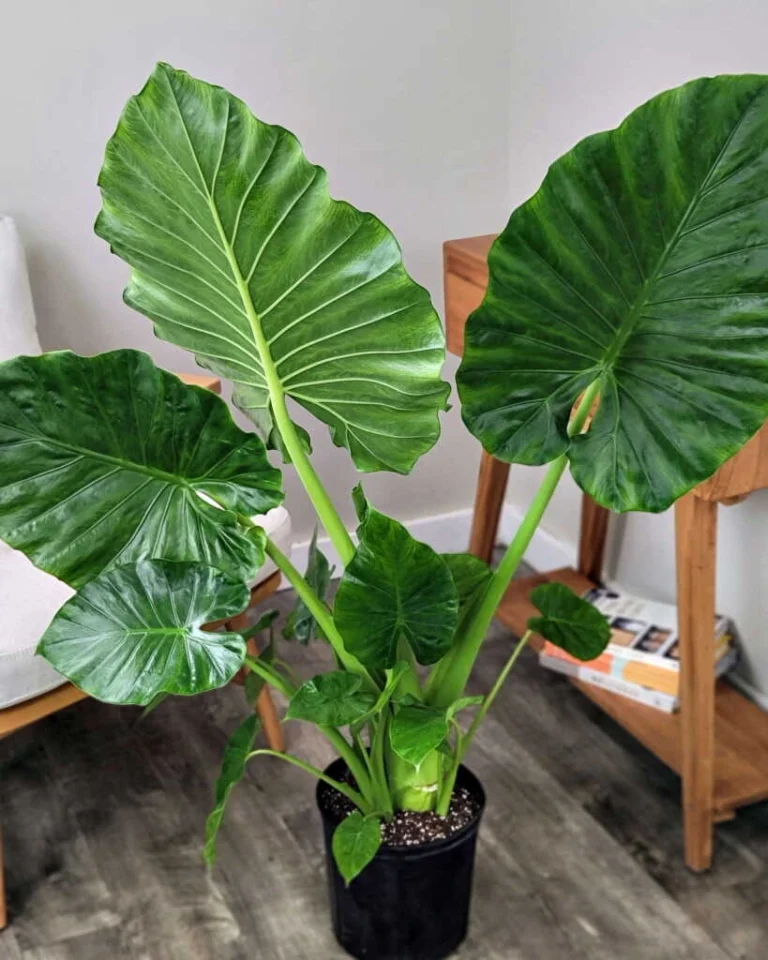
Alocasia plants are picky when it comes to soil. They prefer well-draining, slightly acidic soil that retains moisture but doesn’t become soggy. A mix designed for tropical plants, or a combination of potting soil, perlite, and orchid bark, works wonders for Alocasia Calidora. This mix ensures that excess water drains away while still holding enough moisture for the plant to absorb.
Potting Tips:
-
Pot Size: When choosing a pot, opt for one that’s only slightly larger than the plant’s root ball. Alocasia Calidora doesn’t mind being a bit root-bound, but too much extra space can lead to water retention issues.
-
Drainage: Ensure that the pot has adequate drainage holes. Alocasia plants are very susceptible to root rot if their roots sit in standing water.
-
Repotting Frequency: Alocasia Calidora benefits from repotting every 1-2 years. It’s best to do this in the spring when the plant is actively growing, allowing it to adjust quickly to its new pot and soil.
Watering Alocasia Calidora
Alocasia Calidora enjoys moisture, but overwatering is a common issue that can lead to root rot. To keep your plant healthy, allow the top 1-2 inches of soil to dry out between waterings. During the warmer months, your plant may need more frequent watering, while in winter, you can cut back a little, as the plant’s growth slows down.
-
Water when the top of the soil feels dry to the touch. Make sure the water flows through the drainage holes, preventing the roots from sitting in water.
-
Yellowing leaves, wilting, or mushy stems can indicate that the plant is being overwatered.
-
If your Alocasia’s leaves start to curl or droop, it may need more water. However, don’t flood the plant – just ensure the soil is evenly moist.
Temperature and Humidity Needs
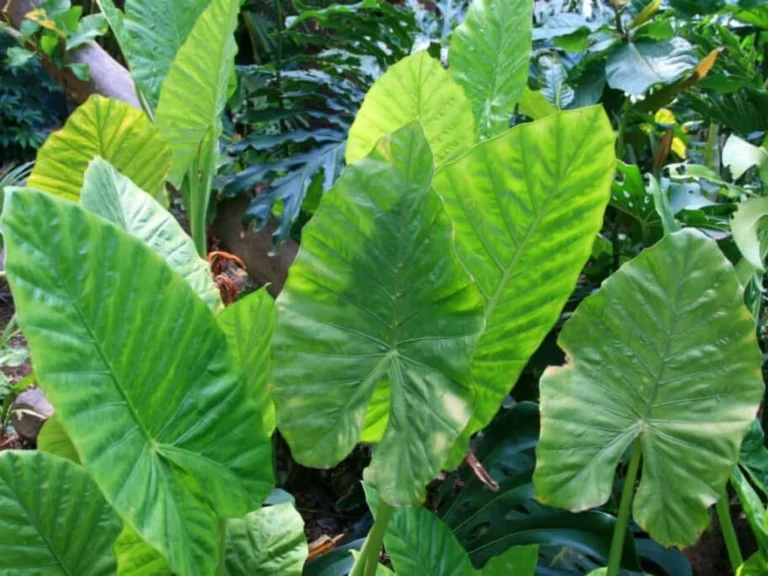
Alocasia Calidora thrives in warm and humid conditions. The ideal temperature range is between 65°F and 80°F (18°C and 27°C). It’s best to keep your Elephant Ear plant away from drafts, air conditioners, or heaters, which can stress the plant and cause leaf damage.
Humidity is also a crucial factor for these tropical plants. If your home is dry, you may need to increase the humidity around your Alocasia Calidora. Consider placing the plant on a humidity tray, or using a room humidifier to keep the moisture levels in check. Misting the leaves occasionally can also help maintain humidity, though it’s no substitute for a more consistent method.
Fertilizing Alocasia Calidora
Alocasia Calidora is a relatively heavy feeder, especially during the growing season (spring and summer). To encourage vibrant growth, use a balanced liquid fertilizer every 4-6 weeks. During the fall and winter months, when the plant is dormant, you can cut back on fertilization or stop completely.
Key Tips:
-
Growing Season Fertilizing: Every 4-6 weeks during spring/summer.
-
Winter Care: Reduce or stop fertilization.
How to Propagate Alocasia Calidora
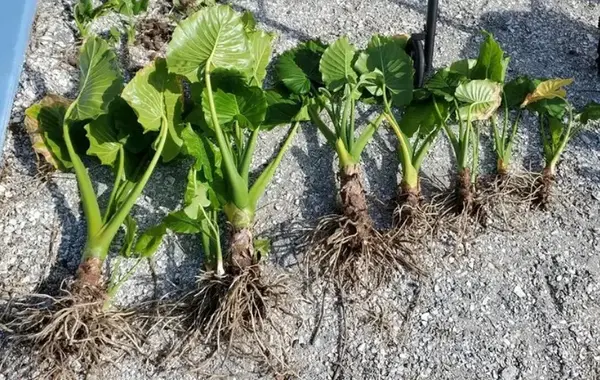
Growing new plants from your Alocasia Calidora is an exciting process! While the plant can’t be propagated through stem cuttings, it can be propagated via division. The best time to do this is during repotting when the plant is actively growing, from mid-spring to summer. The rhizome method works best for this, but make sure your gardening tools are sharp and sterilized to prevent any potential issues.
Propagation Steps:
-
Carefully remove the plant from its pot, gently separating the roots.
-
Look for natural divisions or rhizomes (underground stems) that have their own roots.
-
Cut or gently separate the rhizomes into smaller sections, ensuring each piece has at least one leaf and root attached.
-
Repot each division into a separate container with fresh, well-draining soil.
-
Water the well and place each new plant in a bright, warm area.
Propagation allows you to share your beloved plant with friends or expand your own collection without needing to buy new plants.
Common Problems and How to Solve Them
While Alocasia Calidora is a stunning plant, it can be susceptible to a few common issues. Here are some tips on how to address them:
Yellowing Leaves
Yellowing leaves can be a sign of a variety of issues. It may indicate that your Elephant Ear needs more or less sunlight, water, or fertilizer. Alternatively, yellowing could also signal that your plant is going dormant for the season, especially during the cooler months. If you notice yellowing, try adjusting its care routine. If the plant is entering dormancy, simply trim back the yellow leaves and wait for the plant to regrow when spring comes.
Drooping Leaves
Drooping leaves are another common problem, often caused by issues with light, water, or temperature. If your plant isn’t receiving the correct amount of light, it will become stressed and droop. Additionally, inconsistent watering or temperature fluctuations can also cause the leaves to droop. If your plant is outdoors, heavy rain or winds can make the large leaves droop as well.
Stunted or Pale Leaves
If your Elephant Ear plant has stunted, deformed, or pale leaves, it could indicate that it’s not getting enough nutrients, water, or light. These issues typically arise when the plant is stressed or its basic needs aren’t being met. You may notice the leaves becoming smaller or losing their vibrant green color.
Wilting
Wilting is often a sign that your Elephant Ear plant is getting too much sun or heat and not enough water. If the plant’s large leaves begin to droop and feel soft, it could be a result of high temperatures or direct sunlight, which can dry out the plant too quickly. Alternatively, if the plant isn’t receiving enough water, it can’t keep up with its large leaves and may wilt.
Fungal Infections
Since Alocasia Calidora is a water-loving plant, it’s prone to fungal infections if it’s overwatered or the soil doesn’t drain properly. Fungal diseases often appear as brown spots or mold on the leaves. If you notice these signs, it’s important to act quickly to avoid further damage to your plant.
Best Practices for Indoor Gardening with Alocasia Calidora
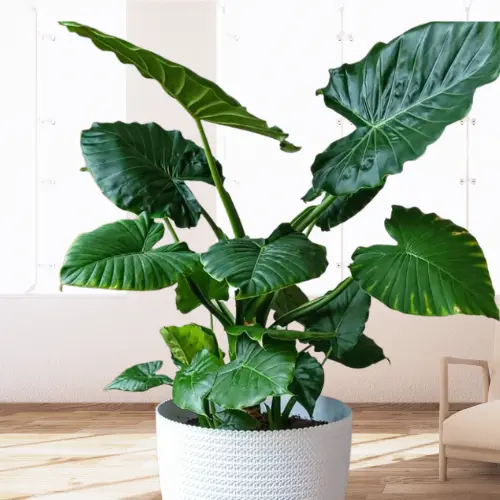
To create the best environment for your Alocasia Calidora, follow these additional tips:
-
Place your Elephant Ear plant in a space where it will get bright but indirect light.
-
Use a humidity tray or humidifier to maintain the necessary moisture levels.
-
Keep your plant in a warm room that avoids cold drafts and temperature fluctuations.
By providing these optimal conditions, your Alocasia Calidora will grow beautifully and reward you with its stunning foliage.
Frequently Asked Questions (FAQ)
-
How often should I water my Alocasia Calidora?
Water when the top of the soil feels dry to the touch, usually once every 7-10 days in the warmer months. -
Can Alocasia Calidora be grown outdoors in the U.S.?
Yes, it can be grown outdoors in USDA hardiness zones 10-11, where temperatures remain above 50°F (10°C). -
Why are the leaves of my Elephant Ear turning yellow?
Yellowing leaves can be a sign of overwatering, insufficient light, or nutrient deficiencies. -
How do I propagate Alocasia Calidora from stem cuttings?
The best way to propagate Alocasia Calidora is through division, not stem cuttings. Divide the rhizomes and replant the sections. -
Does Alocasia Calidora bloom?
Alocasia plants are mainly grown for their stunning foliage rather than their flowers. They only bloom once they reach maturity, and when they do, the flowers are typically quite plain. Indoor Alocasia plants rarely flower. If they do bloom outdoors, many gardeners choose to remove the flowers, allowing the plant to direct its energy into producing more beautiful foliage instead.
Conclusion
Growing Alocasia Calidora, or the Elephant Ear plant, is a delightful way to add a touch of the tropics to your home. By providing the right care, including proper lighting, watering, and humidity, you can ensure that this beautiful plant thrives in your space. Whether you’re a beginner or an experienced gardener, following the steps outlined in this guide will help you achieve success with your Alocasia Calidora. Happy planting!
By following this guide and maintaining the right care, you’ll be able to enjoy the striking beauty of your Alocasia Calidora for years to come. And remember, this plant is not just a great addition to your indoor garden, it’s also a conversation starter, bringing the lush, tropical vibes of Southeast Asia straight into your home.
You may like:

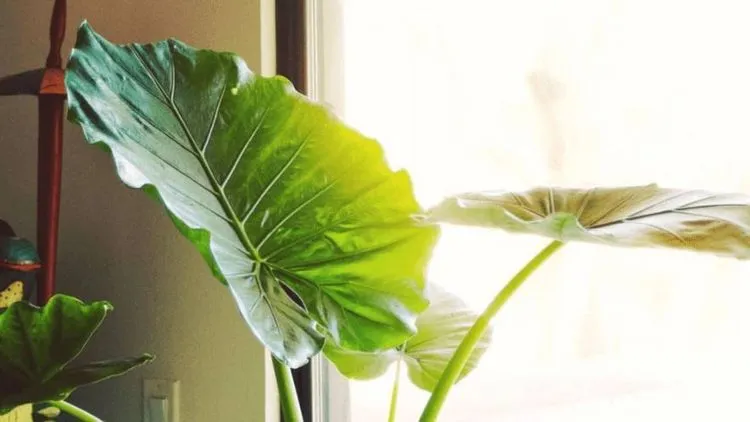
7 Vegetables to Plant in December for a Bountiful Winter Harvest
Winter gardening is a challenge many new gardeners shy away from. But if you’re among [...]
Dec
9 Common Christmas Cactus Problems and How to Fix Them
Have you ever walked past your Christmas cactus and wondered why it suddenly looks sad? [...]
Nov
Swedish Ivy Care: How to Grow a Healthy, Thriving Plant
Have you ever looked at your Swedish Ivy and wondered why the leaves are turning [...]
Nov
Avoid These 10 Garlic Planting Mistakes for Bigger, Healthier Bulbs
Growing garlic at home is one of the most satisfying things a gardener can do [...]
Nov
How to Prevent Christmas Cactus Bud Drop: Tips for a Healthy Bloom
Have you ever noticed your beautiful Christmas cactus (Schlumbergera) starting to lose its buds just [...]
Nov
Discover 7 Stunning Types of Night-Blooming Cereus
Have you ever waited for a flower that only opens at night and then disappears [...]
Nov